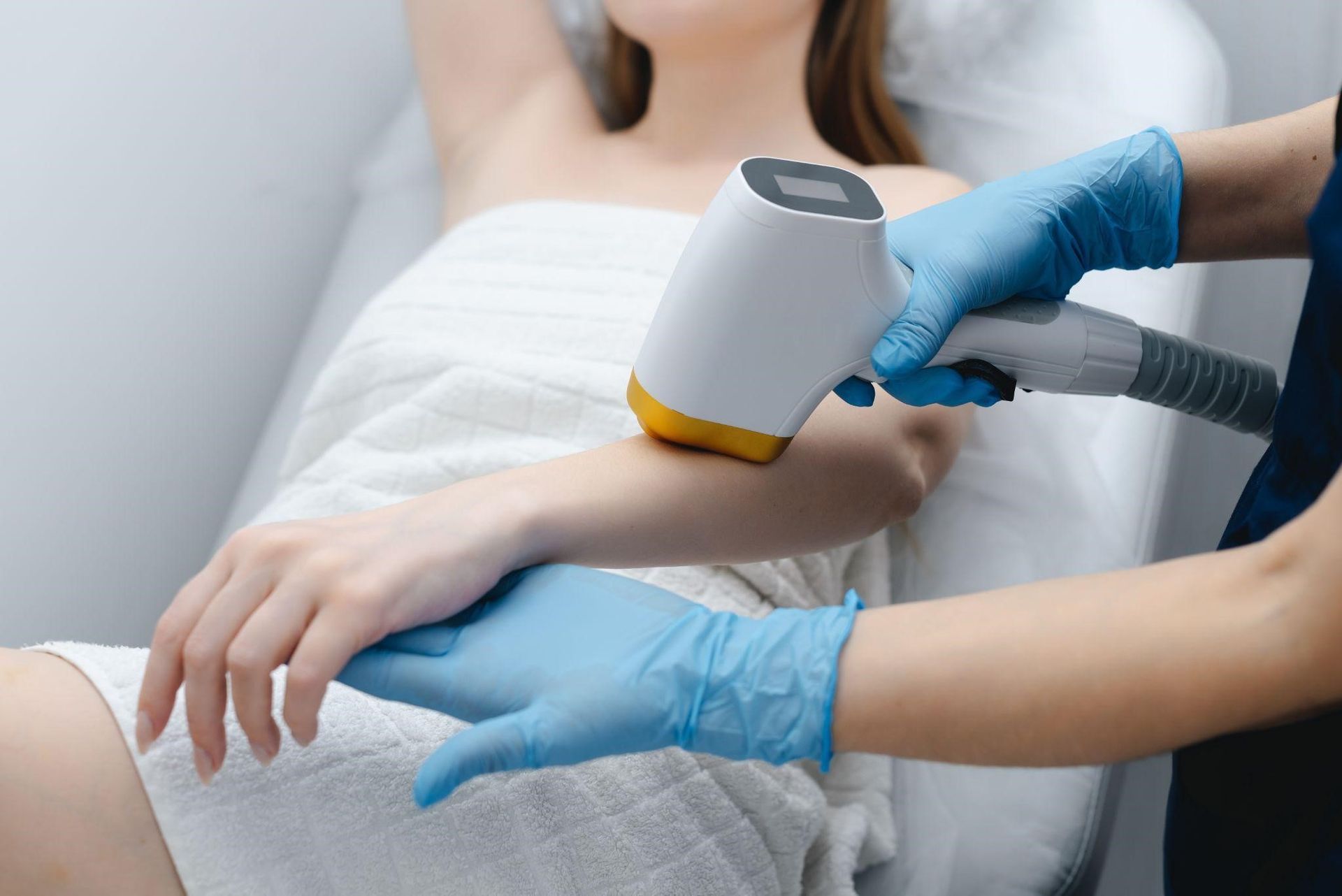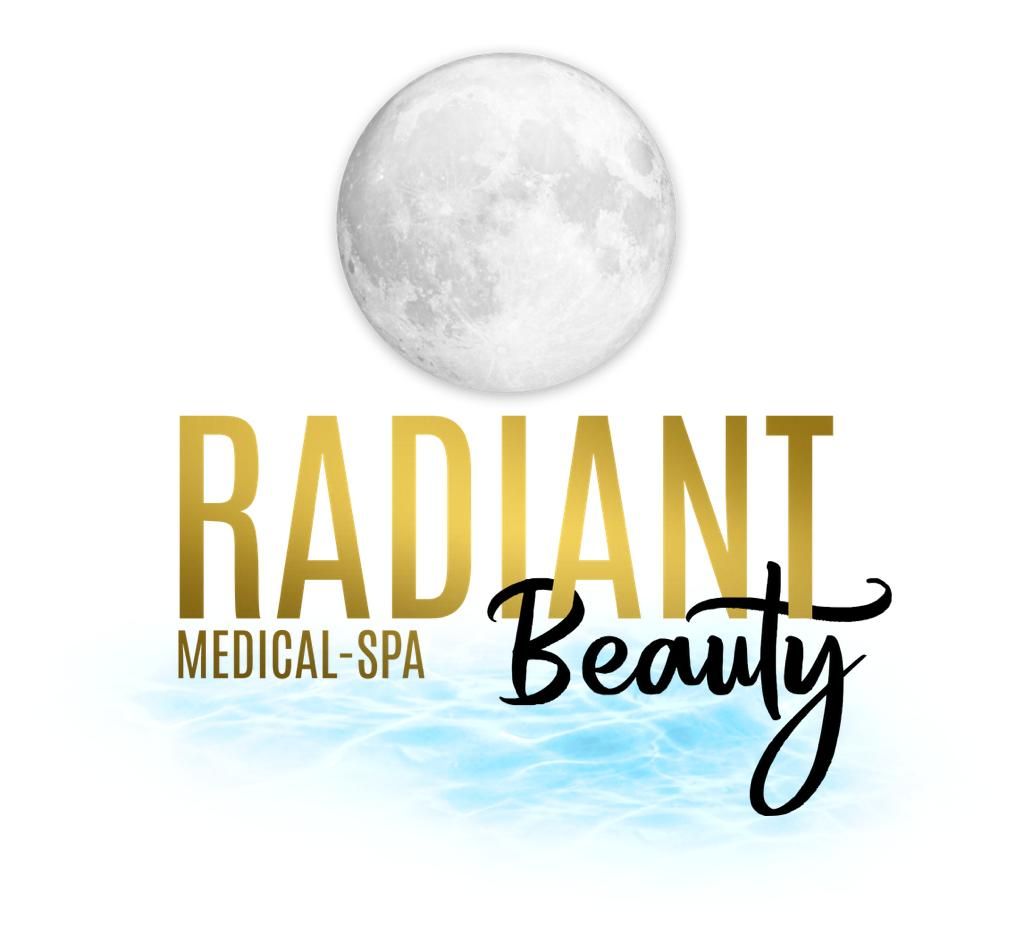
Shaving, waxing, and plucking can be a hassle, and the results never seem to last long enough. Laser hair removal reduces hair growth, making it easier to keep your skin smooth for longer. In this guide, we'll cover key tips to help you get the best results from your treatment and keep your skin looking its best.
Understanding Laser Hair Removal
Laser hair removal is a medical treatment that utilizes focused light energy to disable hair follicles and reduce hair growth. The hair's pigment (melanin) absorbs the light, converting it into heat that disrupts the follicle and slows or prevents future hair growth. This process allows for precise targeting of hair follicles while leaving the surrounding skin unharmed.
Benefits of Laser Hair Removal
Laser hair removal provides a lasting way to minimize unwanted hair. After a series of treatments, many people notice significantly less hair growth, meaning smoother skin with less need for shaving or waxing.
Precise Targeting
Laser technology can focus on specific areas, making it effective for both large areas like the legs and back and smaller, more delicate areas like the face and bikini line.
Quick Sessions
Treatments are fast—small areas take just a few minutes, while larger areas like the legs or back can be done in about an hour. Over time, this saves hours compared to regular shaving or waxing.
Ideal Candidates for the Procedure
Since the laser focuses on melanin, it's most effective for individuals with dark, thick hair against lighter skin tones. However, modern technology has expanded treatment options for more skin tones and hair types.
When Is Laser Hair Removal Helpful?
Aside from cosmetic reasons, laser hair removal can also help those with excessive hair growth due to:
- Hirsutism – Dark, coarse hair growth in women on areas like the face, chest, or back.
- Hypertrichosis – Excess hair growth in men or women anywhere on the body.
- Hormonal imbalances – Increased androgen or testosterone levels.
- Polycystic ovary syndrome (PCOS)
- Certain medications – this includes anabolic steroids or some birth control pills.
- Genetic conditions or hormone-producing tumors.
Since laser hair removal relies on pigment, it may be less effective for blonde, gray, white, or red hair.
Preparing for Your Laser Hair Removal Session

Consultation and Assessment
Before starting laser hair removal, you'll have a consultation with a qualified professional to determine if the treatment is right for you. They will assess:
- Skin Type: Different skin tones react differently to laser treatments, so the settings need to be adjusted for safety and effectiveness.
- Hair Color & Thickness: Darker, coarser hair typically responds best to laser treatment, while lighter hair may require more sessions or different technology.
- Health Conditions & Medications: Certain health conditions and medications may impact your skin's response to the laser, making it essential to review your medical history beforehand.
This personalized assessment helps ensure the best results while minimizing any risks.
Pre-Treatment Guidelines
Preparing properly for laser hair removal can improve your results and reduce risks. Here’s what to do before your session:
- Avoid harmful sun exposure – Stay away from direct sunlight and skip tanning beds for at least two weeks before treatment to prevent burns or skin discoloration.
- Skip waxing and plucking – These hair removal methods remove the follicle, making it difficult for the laser to work effectively. Stick to shaving instead.
- Shave before your appointment – Shave the treatment area 24 to 48 hours before your appointment to ensure the laser can effectively target the hair follicle beneath the skin.
- Avoid lotions and deodorants – On the day of treatment, keep your skin clean and free of creams, lotions, or deodorants, as they can interfere with the laser.
Following these steps will help you have smoother and more effective treatment.
The Laser Hair Removal Procedure
Understanding the steps involved in laser hair removal can help you feel at ease before your session.
What to Expect During the Session
Upon arrival, you'll be provided with protective eyewear to protect your eyes from the laser light. The practitioner will clean the area for treatment and may apply a cooling gel to enhance comfort and facilitate the laser's penetration. The laser technology will then be adjusted according to your skin type and hair characteristics.
As the procedure begins, you might experience a quick snapping sensation, similar to a rubber band against your skin, with discomfort varying by area and sensitivity. The level of discomfort varies based on your sensitivity and the treatment area. The session length varies, lasting just a few minutes for small areas like the upper lip and up to an hour for larger areas like the back or legs.
Technology and Equipment Used
Laser hair removal utilizes innovative technology for optimal safety and results. One of the leading systems used in the industry is the Splendor X by Lumenis, which features BLEND X technology—a combination of Alexandrite and Nd:YAG wavelengths. This allows for precise treatment across a variety of skin tones and hair types.
Modern laser systems also feature built-in cooling technology to improve comfort and safeguard your skin during treatment. These advancements help make the procedure more efficient, reducing discomfort while delivering long-lasting hair reduction.
Pain Management and Comfort Measures
While laser hair removal is well-tolerated, individual pain thresholds vary. To enhance comfort, a qualified practitioner will offer topical anesthetics that can be applied to sensitive areas before the procedure.
Open communication with your practitioner is essential; don't hesitate to express any discomfort during the session so adjustments can be made promptly.
Post-Treatment Care for Optimal Results
Immediate Aftercare
Following the procedure, it's common to experience mild swelling or redness in the treated area, similar to a sunburn. Applying soothing lotions or aloe vera can help alleviate these symptoms.
It's important to avoid hot showers, saunas, and heavy exercise for 24 to 48 hours post-treatment, as excessive heat and sweat can irritate the skin. Refrain from scratching or picking the treated area to prevent infection and scarring.
Long-Term Skin Maintenance
Protecting your skin from too much sun exposure is vital after laser hair removal. Use a sunscreen with at least SPF 30 on treated areas whenever they are exposed to sunlight.
This practice helps prevent hyperpigmentation and ensures the longevity of your results. Regular moisturizing keeps the skin hydrated and supple, promoting optimal healing and comfort between sessions.
Scheduling Follow-Up Sessions
Achieving silky, smooth skin through laser hair removal requires commitment and adherence to a well-structured treatment plan. Understanding the typical number of sessions needed and the factors influencing this can help set realistic expectations and enhance satisfaction with the results.
Common Myths and Misconceptions
Despite its growing popularity, laser hair removal is surrounded by several myths that may deter individuals from considering this effective treatment. Addressing these misconceptions is crucial to making informed decisions about hair removal options.
One of the biggest misconceptions about laser hair removal is that it's a painful experience. In reality, while some individuals may experience mild discomfort during the laser treatment, it is generally well-tolerated.
The sensation is often similar to the snap of a rubber band against the skin. To enhance comfort, many modern laser systems are equipped with cooling devices or offer topical anesthetics to minimize any discomfort during the procedure.
It's Only Effective on Certain Skin Types
Another prevalent myth is that laser hair removal is only effective for people with light skin and dark hair. While it is true that the contrast between light skin and dark hair can yield optimal results, advancements in laser technology have made the procedure accessible and effective for a broader range of skin tones and hair colors. For instance, specific laser systems can safely and effectively treat people with darker skin tones, expanding the benefits of laser hair removal to a more diverse population.
Laser Hair Removal Causes More Hair Growth
Some individuals fear that laser hair removal might stimulate additional hair growth. However, this is a misconception. Laser hair removal works by targeting existing hair follicles to slow growth—it does not create new follicles or stimulate additional hair growth.
In rare cases, a phenomenon called paradoxical hypertrichosis may occur, where finer hair becomes coarser, but this is uncommon and can be managed with additional treatments. Overall, laser hair removal is effective in reducing unwanted hair when performed by qualified professionals.
Choosing the Right Provider in Normal, IL

Selecting an experienced and qualified provider is important to achieving safe and effective laser hair removal results. In Normal, IL, Radiant Beauty Medspa stands out as a premier destination for this procedure.
Importance of Professional Expertise
Ensuring that laser hair removal treatments are performed by certified and experienced professionals cannot be overstated. Qualified practitioners possess the necessary knowledge to assess your skin and hair type, customize treatment settings, and manage any potential side effects. This expertise minimizes risks and enhances the efficacy of the procedure, leading to more satisfactory outcomes.
Radiant Beauty Medspa's Commitment to Excellence
At Radiant Beauty Medspa, we prioritize our clients overall experience. Which is why we ensure to create personalized care and advanced treatment options. Our team of certified professionals utilizes advanced laser technology to ensure effective and safe hair removal across various skin tones and hair types. We prioritize client comfort and satisfaction, making your journey to silky, smooth skin both pleasant and rewarding.
Frequently Asked Questions (FAQs)
Understanding the nuances of laser hair removal can help you make informed decisions. Here are some common questions and their answers:
1. How Many Laser Hair Removal Sessions Will I Need?
The number of sessions needed depends on factors like hair thickness, growth cycle, and the specific area being treated. On average, individuals may need between six to eight sessions to achieve optimal results. Sessions are usually spaced six to eight weeks apart to align with the hair growth cycle.
2. Are There Any Side Effects Of Laser Hair Removal?
Typical side effects may include temporary redness, slight swelling, and a little discomfort in the treated area. These effects usually subside within a few hours to a couple of days. Adhering to post-treatment care instructions can help minimize these side effects.
3. Can I Resume Normal Activities After Laser Hair Removal Treatment?
Yes, most clients can return to their regular activities right after a laser hair removal treatment. However, it's recommended to avoid direct sun exposure, strenuous exercise, and hot baths or saunas for at least 24 to 48 hours post-treatment to allow the skin to heal properly.
4. Is Laser Hair Removal Permanent?
Laser hair removal offers long-term hair reduction, but it may not result in permanent hair removal. Some hair may eventually regrow, but it is typically finer and lighter than before. Maintenance sessions may be needed to sustain the desired results over time.
Conclusion
Embarking on the journey to silky, smooth skin through laser hair removal is a decision that combines the benefits of advanced technology with professional expertise. By understanding the procedure, preparing adequately, and following post-treatment care, you can achieve lasting results that enhance your natural beauty and boost your confidence.
At Radiant Beauty Medspa in Normal, IL, we are committed to guiding you through this process with personalized care and state-of-the-art treatments. Book a consultation with our experienced team today to begin your journey toward a more radiant you.

Dr. Ahmad Jibawi is a board-certified family medicine physician and the founder of Radiant Beauty Medical Spa, specializing in facial injectables, skin resurfacing, PDO threads, and full-face rejuvenation.
